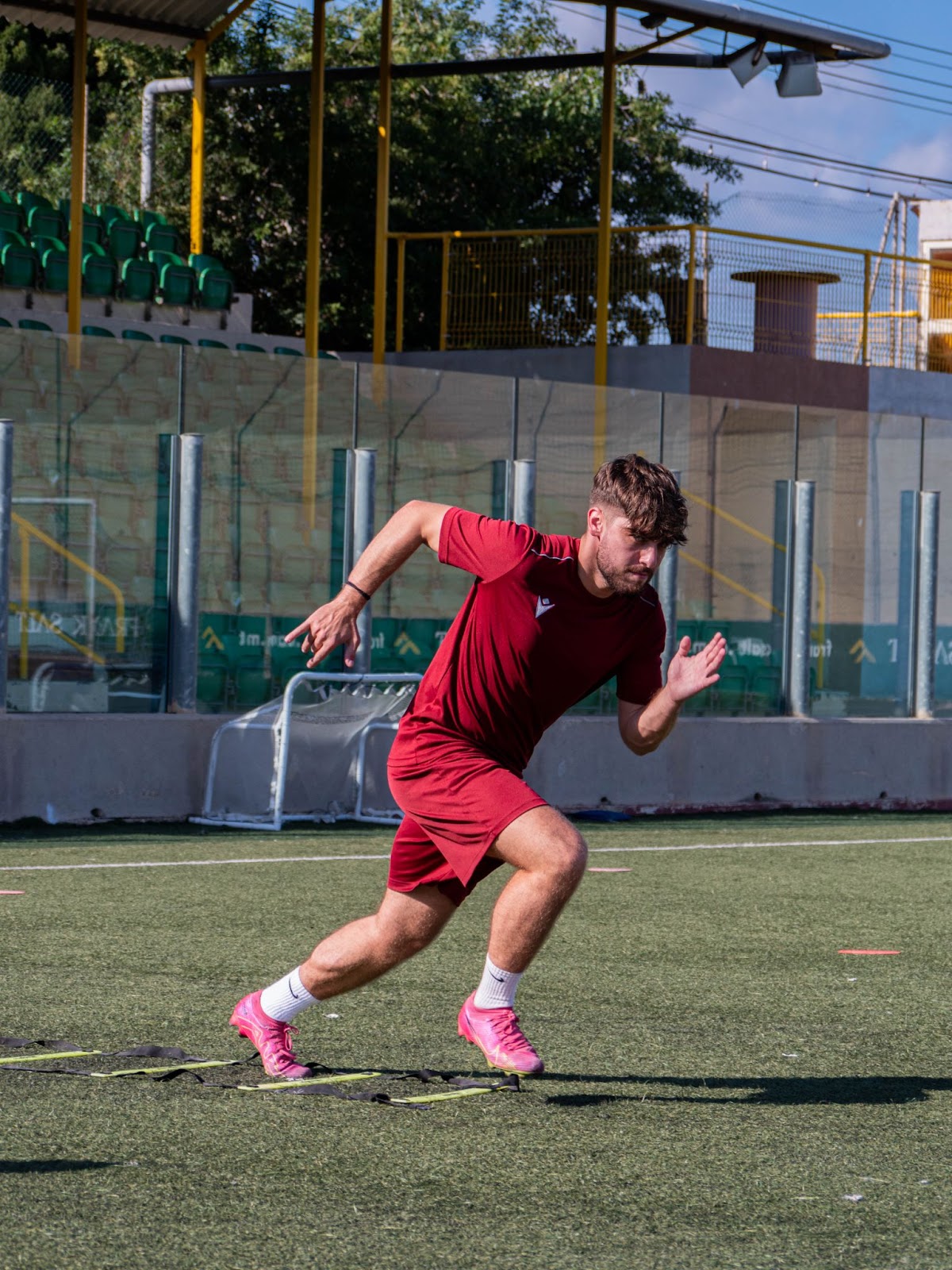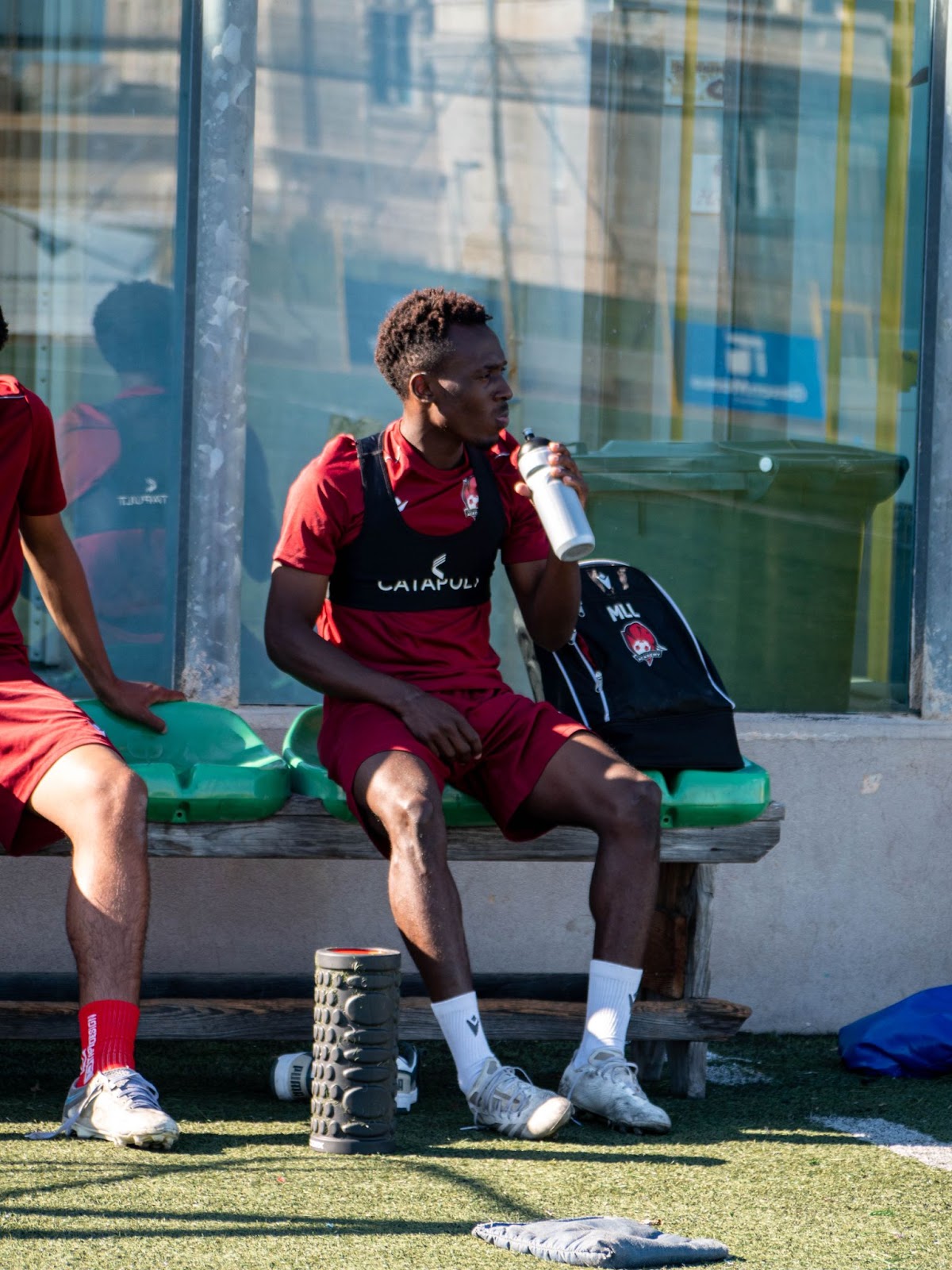Endurance, a fundamental pillar of football performance, allows players to sprint, maintain a constant rhythm and be decisive right up to the final whistle.
But how can you develop and optimise your endurance while improving your physical condition to excel on the pitch?
In this article, we explore key strategies to help footballers, whether amateur or professional, reach their full potential.
Summary
Cardiovascular training: The basis of endurance
Excellent stamina starts with cardiovascular training efficient. This type of training improves your ability to breathe efficiently, which is essential for maintaining a high level of energy throughout the match.
Long distance race
Long-distance running is ideal for building a solid endurance base.
Run at a moderate pace for 30 to 60 minutes, 2 to 3 times a week, This helps to strengthen the heart and lungs, which in turn improves recovery between phases of intense play.
To maximise the benefits, try to keep your heart rate between 60 % and 70 % of your maximum capacity.
Interval training
Football is made up of constant changes of pace: sprints, moderate runs and recovery periods.
That's why interval training is crucial. Alternate periods of fast running (30-60 seconds) with periods of active recovery (1-2 minutes at a slow pace). This method reproduces the demands of a match and improves both aerobic and anaerobic endurance.
Strength and conditioning: Preparing your body properly
As well as endurance, a footballer's physical condition also relies on muscular strength and stability.
These qualities make it possible to absorb impact, perform explosive movements and reduce the risk of injury.
Lower body exercises
Strengthening the legs is a priority for all football players. Here are some key exercises to incorporate into your programme:
- Squats: Develop strength in the quadriceps, hamstrings and glutes.
- Slots: Improve stability and strengthen unilateral muscles.
- Box jumps: Increase your explosiveness, essential for sprints and jumps.
Core exercises
A strong core promotes better posture and body control, which are essential for dribbling, shooting and duels. Incorporate the following exercises:
- Boards: Strengthen the abdominal and stabilising muscles.
- Russian twists: Improve core rotation, crucial for passing and striking.
- Bird Dogs: Develop coordination and spinal stability.

Nutrition and hydration: The fuel of performance
A balanced diet and adequate hydration play an important role significant in improving endurance and physical condition.
A balanced diet
Your body needs a mix of macronutrients to function at its best:
- Carbohydrates: Provide the energy you need for intensive exercise. Favour complex carbohydrates (brown rice, sweet potatoes).
- Protein: Promotes recovery and muscle building. Eat lean proteins such as chicken, eggs or tofu.
- Good fats: Support cellular functions and sustainable energy. Include avocados, nuts and olive oil.
The importance of hydration
Even slight dehydration can affect your performance on the pitch.
Drink water throughout the day and supplement with isotonic drinks during intense training to replace lost electrolytes.

Recovery and rest: The secret ingredient of endurance
Progress doesn't just happen on the pitch or in the gym. It also takes place during periods of rest and recovery.
Active recovery
Avoid remaining totally inactive after training.
Opt for light activities such as yoga, swimming or walking to improve circulation, reduce aches and pains and prepare your body for the next session.
Sleep
Sleep is crucial for muscular and mental recovery.
Aim between 7 and 9 a.m. per night to regenerate your body and improve muscle memory, which is particularly beneficial for footballers working on technical skills.

Conclusion
Improving endurance and fitness in football requires regular and strategic work. By combining training cardiovascular exercises, targeted force, a power supply and periods of recovery you'll be better prepared to face the challenges of the field.

